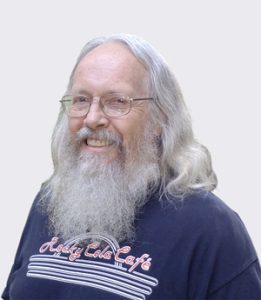1917 Murder: Robbery or Ill-fated Love Triangle? – Part 1

president of the Historical
Society of the Crescenta Valley
and loves local history.
Reach him at lawlerdad@yahoo.com.
Twenty-five-year-old Albert de Marcus had checked himself into the Thorneycroft Farms, a private sanitarium located near Adams and Windsor in Glendale. Albert was suffering from “poor health” (perhaps tuberculosis?). But he was a handsome single young man, and had a way with women. He juggled several girlfriends at a time, each of them falling hard for the young man. He was always well-dressed and always polite. He seemed to have no close friends, no confidants, but enjoyed a constant stream of female lovers. For a man of poor health, he seemed to have stamina!
To make ends meet and to get some fresh air, Albert had taken a job driving a “jitney”. Jitneys in that era were the equivalent of today’s Uber or Lyft. They were basically unlicensed taxis that ran flexible schedules. The name “jitney” was the slang term for a nickel, which was the original fare for a jitney car. During the mid-teens the use of jitneys exploded in Los Angeles and many young men scratched out a living driving these ride-share cars for meager fares. In Albert’s case, he had a semi-regular route, driving passengers from Glendale to Sunland, competing with the new Glendale and Montrose Railway trolleys, which only ran from Glendale to La Crescenta. But he also took special fares, driving from anywhere to anywhere, at any hour of the day.
At 7 in the evening in February 1917, Albert was having his dinner at a small diner in Glendale. The waitress picked up a phone call to the diner, and the caller asked to speak to Albert. The waitress later said she overheard Albert agree to pick up a fare in Glendale for transport to La Cañada. Albert paid for his food and walked to the storage garage to get his jitney, a Dodge Touring car.
He apparently picked up his customer at the address given. The passenger, as was customary, probably sat in the back seat. It was drizzling that night and would have been a long, dark drive up Verdugo Canyon. We don’t know if Albert knew his passenger. We don’t know what was said between them. But we do know that at a very dark part of what is today Foothill Boulevard between La Crescenta and La Cañada, Albert felt the cold metal of a gun barrel pressed against the back of his head, and then knew only darkness.
The next morning, early travelers on the dirt highway between La Crescenta and La Cañada came upon an odd sight – a car was stopped in the middle of the road, it’s lights on. A dead man was slumped over the steering wheel, cold and stiff. The police were called and they examined the body. The driver had been shot twice in the back of the head, one of the bullets exiting his forehead. His pockets had been emptied and anything of value in the car was gone. The car was marked as a jitney, so it appeared to be a case of a passenger robbing the driver. The surrounding area was searched, but tire tracks indicated another car had pulled up and perhaps taken off with the robber. It seemed a cut-and-dried case of armed robbery.
The driver was identified as Albert de Marcus and, in a day or so, two policemen went to Albert’s lodging to check on things there. The police were startled to find among his possessions a box containing literally hundreds of love letters from various women. As they went through the letters, it became obvious that many of the women were desperately in love with Albert and that his affairs were tangled. Many of the letters spoke of deep love and a wish to marry. Letters indicated that some of Albert’s lovers were married women; a couple of them were wealthy.
This brought up a new avenue of investigation. If the motive was really robbery, why wasn’t the car taken? Could this have been a crime of passion, done by a jilted lover or a jealous husband?
Next week, we’ll look at Albert’s love life for a motive.
